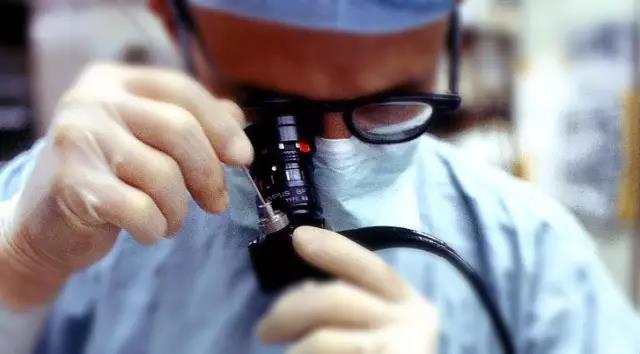
Understanding Upper GI Endoscopy
An upper GI endoscopy, also known as upper gastrointestinal endoscopy, is a minimally invasive procedure that enables a doctor to examine the upper digestive system. This includes the esophagus, stomach, and the initial part of the small intestine. It is a valuable tool for diagnosing various conditions affecting these areas and can also be used for treatment purposes when necessary. The procedure allows for a close examination of the upper GI tract, providing important insights into any potential issues or abnormalities that may be present.
Preparing for Endoscopy
Understanding the Procedure
Before undergoing an upper GI endoscopy, it’s important to understand the procedure and its significance. This minimally invasive technique enables a doctor to visually inspect the upper digestive system, including the esophagus, stomach, and the initial part of the small intestine. By following specific fasting guidelines provided by your doctor, you can adequately prepare for the procedure, ensuring optimal conditions for a thorough examination.
Preparation Tips
Medication Discussion: Discuss any medications you are currently taking with your doctor. Some medications may need to be adjusted or temporarily stopped before the procedure to minimize any potential complications.
Arranging Transportation: It is crucial to arrange for a responsible adult to drive you home after the endoscopy. The sedative used during the procedure requires that you do not operate heavy machinery or drive for a certain period afterward.
By adhering to these preparation tips and understanding the significance of each step, you can ensure a smooth and successful experience when preparing for upper GI endoscopy.
What Happens During Endoscopy
The Procedure
The upper GI endoscopy procedure involves the gentle insertion of a thin, flexible tube equipped with a camera through the mouth and into the esophagus, stomach, and duodenum. This allows the doctor to obtain a clear view of the upper digestive tract and identify any potential abnormalities or issues that may be present. During this process, the doctor may also take tissue samples for further examination, if necessary.
Sedation and Monitoring
Patients undergoing an upper GI endoscopy are typically administered a sedative to help them relax and minimize any discomfort during the procedure. Throughout the endoscopy, vital signs are closely monitored to ensure the patient’s safety and well-being. This careful monitoring is essential in maintaining the patient’s comfort and safety throughout the entire process.
By understanding what occurs during an upper GI endoscopy procedure, patients can feel more at ease and informed about what to expect during this important examination of their upper digestive system.
After the Endoscopy
Recovery Period
Following the upper GI endoscopy, patients will be monitored in a designated recovery area until the effects of the sedative have worn off. It is common to experience mild symptoms such as a sore throat and bloating during this time, but these discomforts typically subside relatively quickly.
Post-Procedure Care
Patients are usually advised to refrain from driving, operating heavy machinery, or making important decisions for the remainder of the day following the procedure. Additionally, follow-up appointments may be scheduled to review the results of the endoscopy and discuss any necessary follow-up care.
Understanding Endoscopy Risks
Potential Risks
During an upper GI endoscopy, it’s important to be aware of the potential risks, although they are rare. Some of the potential risks associated with this procedure include:
Bleeding: In some cases, the endoscopy may cause bleeding, particularly if a tissue sample is taken or a polyp is removed during the procedure.
Infection: While uncommon, there is a slight risk of infection developing at the site where the endoscope was inserted.
It’s essential for patients to discuss any concerns about these potential risks with their healthcare provider before undergoing the procedure. This discussion can provide a clearer understanding and alleviate any anxieties about the process.
When to Seek Immediate Care
After an upper GI endoscopy, it’s crucial to be vigilant for any signs that may indicate a complication requiring immediate medical attention. If you experience any of the following symptoms after the procedure, seek prompt medical care:
Severe Chest Pain: If you experience intense or persistent chest pain after the endoscopy, it's important to seek immediate medical attention as this could indicate a serious issue. Difficulty Breathing: Any difficulty in breathing should be addressed immediately by seeking medical care. Persistent Bleeding: If you notice ongoing or excessive bleeding after the procedure, it's important to seek prompt medical attention.
Being aware of these signs and symptoms can help patients take quick and appropriate action if necessary.
Navigating Upper GI Endoscopy
Navigating an upper GI endoscopy can be a less daunting experience when you have a clear understanding of what to expect. By following the pre-procedure instructions provided by your healthcare provider and openly discussing any concerns, you can ensure a smoother and more comfortable process. This proactive approach allows for better preparation and helps alleviate any anxiety or apprehension associated with undergoing an upper GI tract examination. Prioritizing communication with your healthcare team can significantly contribute to a more positive experience during the entire procedure.